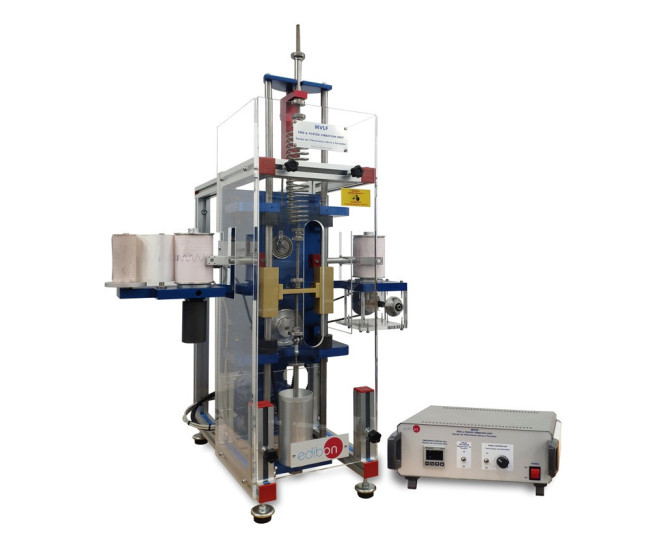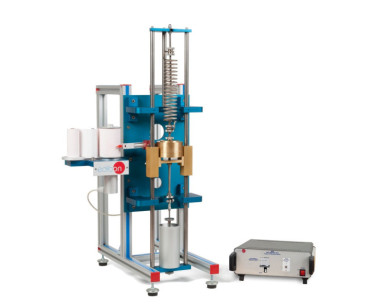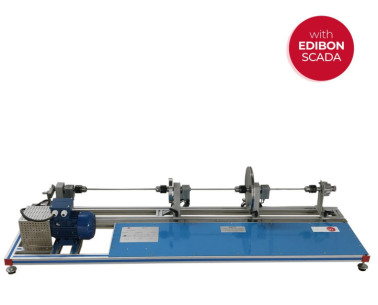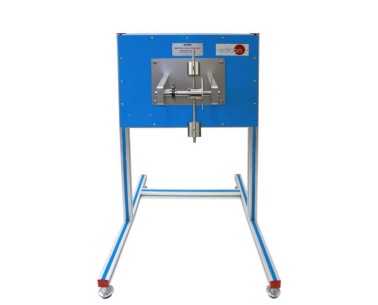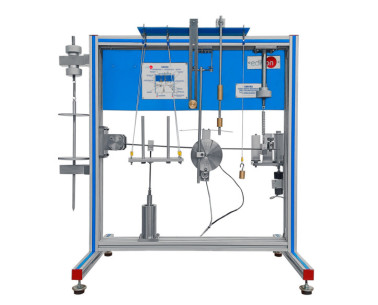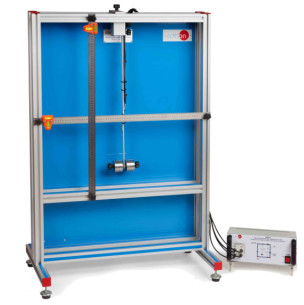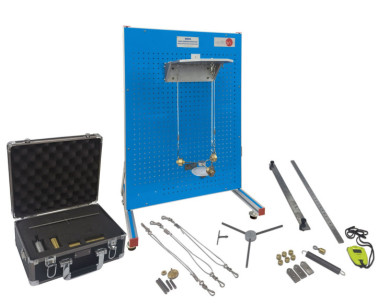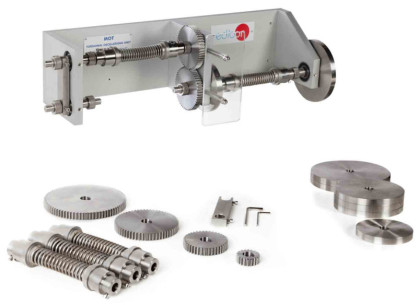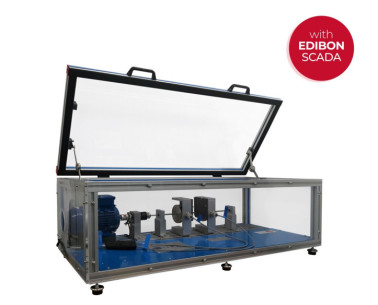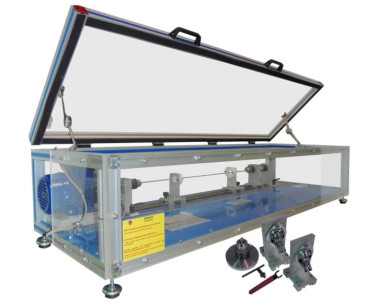MVLF 自由・強制振動実験装置
革新的なシステム
The Free and Forced Vibration Unit, "MVLF", has been designed by EDIBON to perform demonstrations and experiments which provide an understanding of the free and forced vibrations of a simple spring-mass-damper system.
研究室
関連ニュース
概要
The Free and Forced Vibration Unit, "MVLF", has been developed to cover a range of demonstrations and experiments which provide the user with an understanding of the free and forced vibrations of a simple spring-mass-damper system. Simple adjustments can be made to the unit and the motion of the mass can be readily observed and recorded on the pen recorders provided.
A feature of the unit which approaches the problems of forced damped vibrations for the first time, is the simple way in which it is presented so that free and forced vibration phenomena can be readily observed.
Experiments can be carried out by the students to investigate the relationship between the mass of the body, the stiffness of the spring and the period/frequency of oscillation and to observe the effect of viscous damping on the system.
The basic components of the unit consist of a rigid frame with vertical mass carriage guides, an upper mounting plate for the spring, a lower mounting plate for the damper and a variable speed motor and drive unit for the forced vibration experiments. The mass carriage is constrained by rollers which run along on the vertical guides to provide a single degree of freedom with minimum uncontrolled damping.
Frequency of the oscillations can be measured with an optical sensor.
Two pens, attached to the vibrating frame, and two paper strips provide a means of producing amplitude/time recordings and amplitude/phase recordings.
Two methods of forcing vibrations are provided: a rotating out-of-balance mass and a periodic displacement to the point of support of the spring.
Springs of various stiffness and suitable masses are supplied. The damper is adjustable to provide a wide range of damping.
A control console attached to the frame contains the speed control unit and a frequency indicating meter.
演習と指導の慣行
マニュアルに含まれるガイド付き実習
- Investigation of the relationship between the mass of the body, the stiffness of the spring and the period/frequency of oscillation for a simple spring mass system with one degree of freedom.
- Investigation of the relationship between the applied force, the viscosity of the oil and the velocity for various settings of the adjustable oil damper.
- Observation of how varying the degree of damping affects the response of a second order mechanical system to a step input.
- Observation of the free vibrations of a system having one degree of freedom.
- Study of the effect of viscous damping on the free vibrations of a simple spring-mass-damper system.
- Determination of the damping ratio for a given spring-massdamper system.
- Investigation of the relationship between the amplitude of the steady state vibration of the vibrating mass and the forcing frequency for various damping ratios. Vibrations induced by applying a periodic disturbing force to the mass.
- Investigation of the relationship between the amplitude of the steady state vibration of the vibrating mass and the forcing frequency for various damping ratios. Vibrations induced by a periodic displacement of the point of support of the spring.
- Investigation of the phase relationship between the vibrating mass and the periodic displacement of the spring support for varying damping ratios.
- Study of the vibrations induced by applying a periodic disturbing force to the mass in a viscous damped system.
- Study of the vibrations induced by a periodic displacement of the point of support of the spring in a viscous damped system.
利用可能な類似の機器
補完的な機器
コンピューター制御ねじり振動実験装置
らせんばね振動実験装置
自由振動実験装置
装置の包括的な機械振動分析
棒の自由振動学習用装置
Simple Harmonic Motion Unit
ねじれ振動実験装置
装置 臨界速度の研究装置、コンピューター制御
シャフト旋回実験装置
品質

アフターサービス

 クッキーの設定
クッキーの設定

